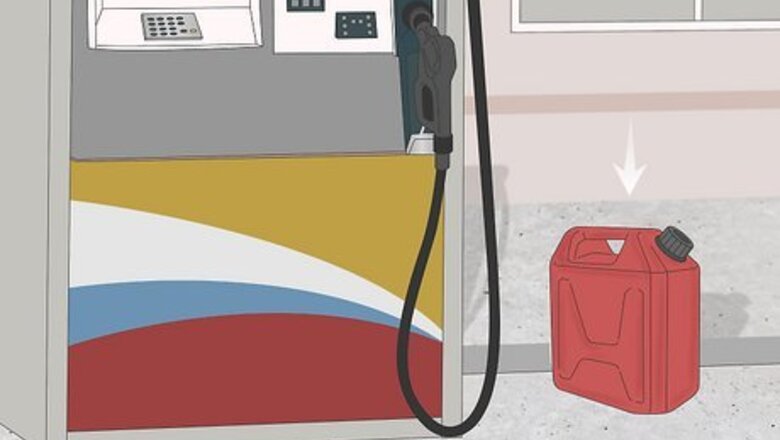
views
- Place your gas can on the ground and stick the pump’s nozzle inside the valve to fill it.
- For gas cans with spill-proof spouts, press or twist the clip on the nozzle. Hook the spout onto the tank valve and press it down to pour the gas out.
- For gas cans with a classic quick-flow spout, undo the vent cap and pour the gas into the tank’s valve.
Filling a Gas Can

Set your gas can on the ground by the pump. Take your gas can out of your vehicle before you start filling it to help prevent a buildup of static electricity. If you fill your gas can while it’s on top of a plastic truck bed or trunk liner, then the static electricity could spark and ignite the gasoline. Taking your gas can out of your vehicle lets the static electricity dissipate through the ground so it doesn’t build up a charge.
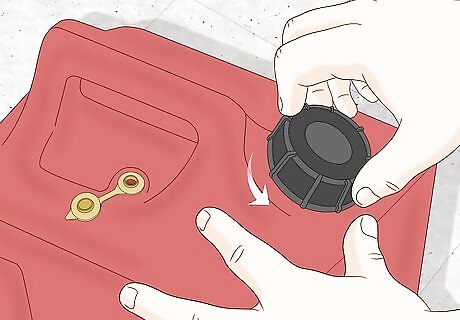
Unscrew the spout and open the vent cap. Loosen the nut or cap on the gas can by turning it counterclockwise, and set the cap aside. If you have an older gas can, look for a small yellow vent cap on the top and pull it out so your gas can is easier to fill. Some newer gas cans have child-safe caps that have a tab with grooves. Squeeze the tab against the cap before you turn it to make it come loose.
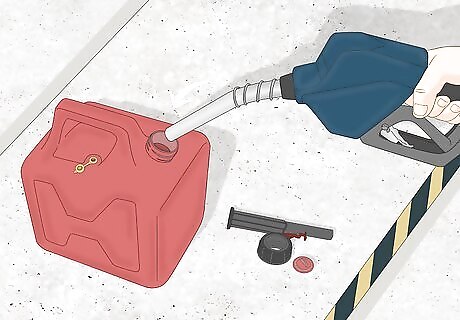
Insert the pump’s nozzle into the opening of the gas can. Take the nozzle off of the gas pump and push the end into the hole on top of the gas can. Make sure the nozzle is touching the side of the container to help prevent static electricity from building up while you’re pumping gasoline.
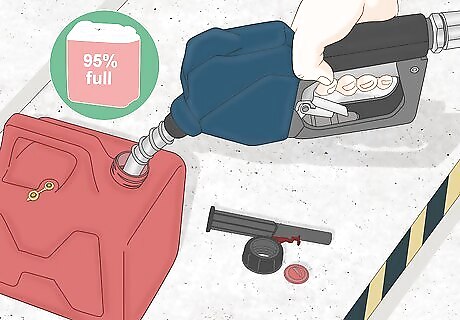
Fill the container 95% full. Slowly squeeze the trigger on the pump nozzle to start filling your gas can. Stay near your gas can the entire time you’re filling it to make sure it doesn’t overflow. When your tank is about 95% full, let go of the pump’s trigger and pull the nozzle out slowly. Leaving a little empty space at the top of the gas can allows the fuel to expand when the temperatures rise. Never pump gas when you’re smoking or near an open flame since the fuel could ignite. Avoid using the latch on the gas nozzle that holds the trigger down since it could easily overfill the container and spill out the sides.
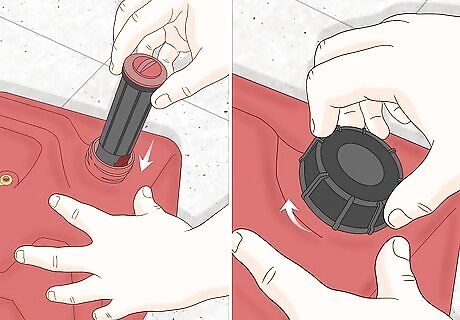
Secure the cap and spout back onto the gas can. Screw the cap back onto the gas can by turning it clockwise until it’s finger-tight. If you had to unplug a vent cap, push it back into the vent on the top of your gas can. Make sure the caps are sealed tightly so they don’t spill or leak. Avoid using any containers that don’t seal properly since they’re more likely to leak and become a fire risk.
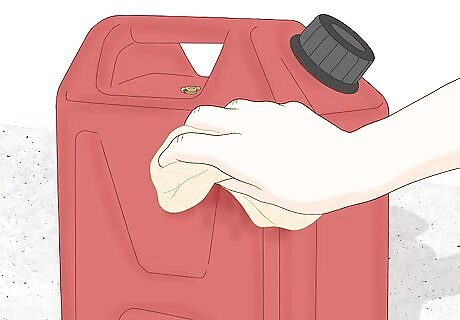
Wipe the outside of the gas can. Most gas pumps have a paper towel dispenser nearby, so grab a few from the nearest one. Clean off any drops of gasoline that dribbled down the side of your gas can to clean it off. If you’re able to, get the paper towel wet first to help remove any gasoline residue. If you spilled a lot of gasoline from the can, then hose it off with clean water.
Spill-Proof Spouts
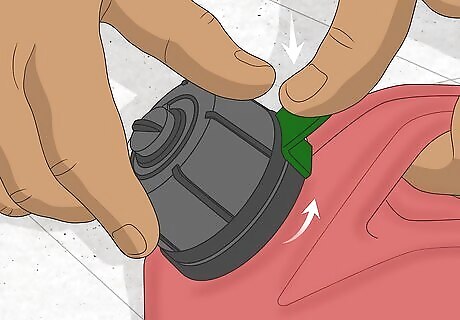
Twist or press down the clip on the spout. Look near the middle or base of the spout for a locking clip, which is usually green, yellow, red, or black. If the clip looks like a long, flat button, hold it down with your thumb. If the clip loops around the base of the spout, turn it counterclockwise to unlock it and hold it in position. Any gas can made after 2009 has a spill-proof spout.
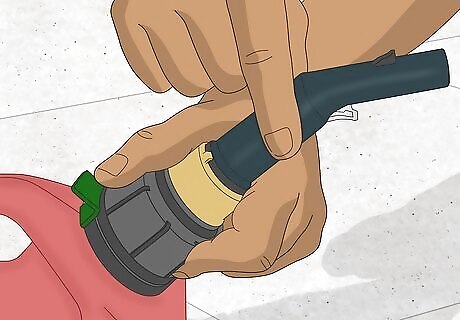
Place the spout’s hook against the lip of the gas tank valve. Look near the end of the spout for a small plastic hook on the top or bottom of the opening. Unscrew the cap on the gas tank you’re pouring fuel into. Put the tip of the gas can spout inside of the valve on the tank so the hook clips onto the outer rim. Make sure whatever you’re fueling up is turned off and cooled down so the gas doesn’t ignite. Keep the clip held down or turned as you place the spout in the gas tank.

Press the spout in to pour gas out of the can. Gently tip the gas can up and apply pressure so the spout pushes in closer to where it screws in. Pour the gas slowly so you don’t accidentally spill or overflow the tank. Once you’re finished filling up, pull the spout out of the tank and let go of the clip to lock it again.
Classic Quick-Flow Spouts
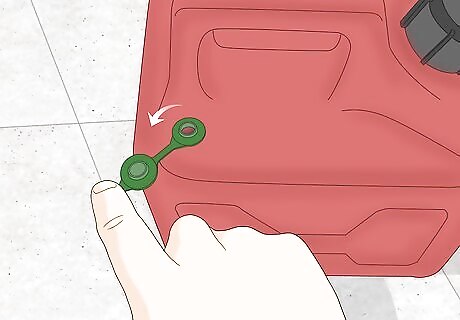
Open the vent cap on the tank. Locate the vent cap on the top of the gas can near the handle. Pull the vent cap out to help the gasoline pour smoothly out of the container. Undoing the vent cap lets air flow through the gas can so the fuel doesn’t splash out and make a mess. Most gas cans made before 2009 have a quick-flow spout.
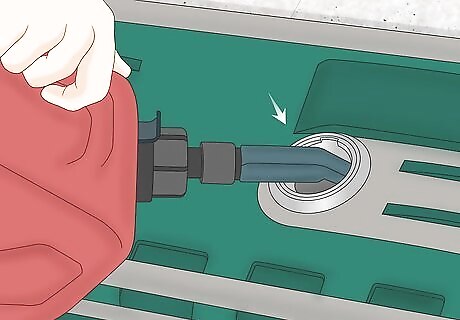
Place the spout inside the gas tank you’re filling. Pop the cap off the end of the spout and put the tip directly in the tank. Make sure the spout touches the side of the gas tank to help get rid of any static electricity that may have built up. Turn the power off and let the engine cool down before you start pouring gas so the fuel doesn’t combust and start a fire.
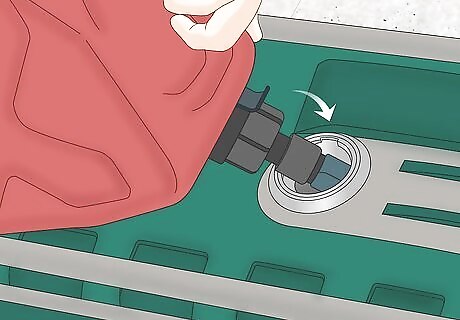
Pour the gas slowly into the tank. Tip the gas can up until a small stream of fuel comes out from the spout. Try to maintain a steady, even pour so you don’t accidentally spill or splash any outside of the tank. When you’re finished filling the tank, take the spout out from the valve and put the cap back on.
Best Practices

Put the gas can in your trunk or on a roof rack if you need to transport it. Avoid keeping the gas can in the passenger area of a vehicle since the fumes could build up inside. Instead, secure the gas can in a well-ventilated space, such as a trunk, truck bed, or roof rack. Wrap a few bungee cords around your gas can and clip it to a sturdy surface so it doesn’t tip over. If you don’t have any bungee cords, place other heavy items around your gas can so it can’t move or shift around.

Store your gas can in a cool place away from living areas. Try to find a well-ventilated area separate from your home, such as a shed or detached garage. Otherwise, keep the gas can outdoors and away from any sunny areas or electrical equipment. Avoid storing gasoline in your basement or in a utility room since other appliances could ignite the fuel. Keep gasoline and other fuel locked up if possible so kids and animals can’t access them.
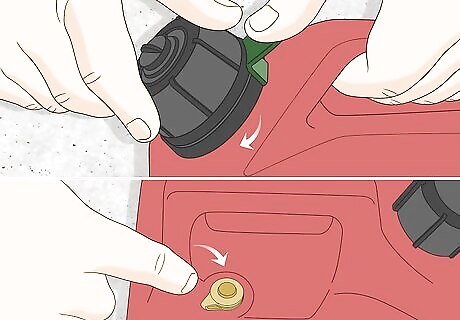
Seal the fill valve and vent cap when you aren’t using the can. Since gasoline fumes can cause eye and lung irritation, screw the cap tightly onto your gas can as soon as you finish using it. If your gas can has a vent cap, press it in all the way to ensure it doesn’t leak.
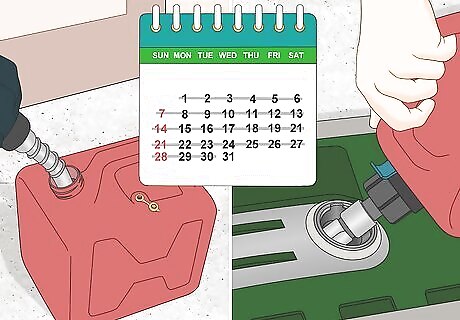
Use the gasoline within 30 days of filling up the can. After 30 days, your gasoline will start to break down and won’t work as efficiently as it used to. Only fill your gas tank up with as much fuel as you’ll need during the next month to ensure you use it all. If you want to keep your gasoline for longer, mix in a stabilizer so it doesn’t break down.
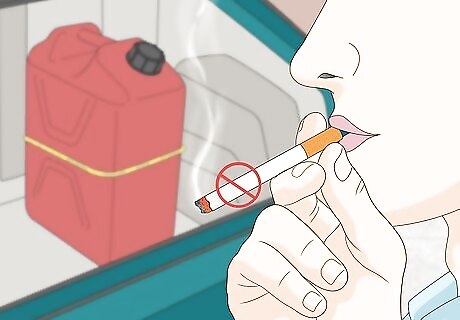
Avoid smoking or using open flames around your gas can. Gasoline is extremely flammable, so keep it away from any heat sources or appliances that could cause a spark. Fumes can linger on your clothing, so wait a few minutes after you pour your gasoline and put it away before smoking.


















Comments
0 comment